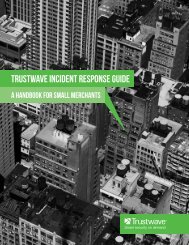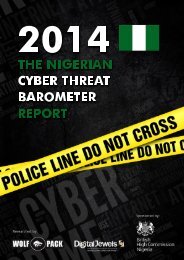Cyber-Security-Monitoring-Guide
Cyber-Security-Monitoring-Guide
Cyber-Security-Monitoring-Guide
You also want an ePaper? Increase the reach of your titles
YUMPU automatically turns print PDFs into web optimized ePapers that Google loves.
<strong>Cyber</strong> <strong>Security</strong> <strong>Monitoring</strong> and Logging <strong>Guide</strong>Focus should be placed on addressing the root cause of potential cyber security incidentsand not merely fixing flaws discovered during cyber security threat scenario exercises.Key phases in the monitoring processOnce the prerequisites have been completed, there are four key phases that are required to perform an effective cybersecurity monitoring process on a continuous basis, as shown in Figure 7 below.Collect relevantevent dataTake appropriate actionFuse events togetherAnalyse anomalouseventsFigure 7: <strong>Cyber</strong> security monitoring – key componentsThese four phases are part of a continuing cycle with lessons learnt from actions takenin stage four being fed back into the other three phases.Workshop participants reviewed each of the four phases in the cyber security monitoring process, outlining the maincomponents of each in the table below.PhaseCOLLECTION(mostly machine)FUSION (mostlymachine)ANALYSIS(mostly human)ACTION (mostlyhuman)Main components• Log identification• Normalisation (if going on to monitor)• Retention• Filtering• Automation (typically in a SIEM)• SIEM rules• Firewall rules• IDS signatures/IOC• Predetermined rules• Triage (investigation)• Workflow• Trends/patterns/risk analysis• <strong>Cyber</strong> security intelligence• Response, remediation and recovery• Escalation (internal and external)• Investigation• Incident management (including root cause remediation)• Reporting• Change management28










